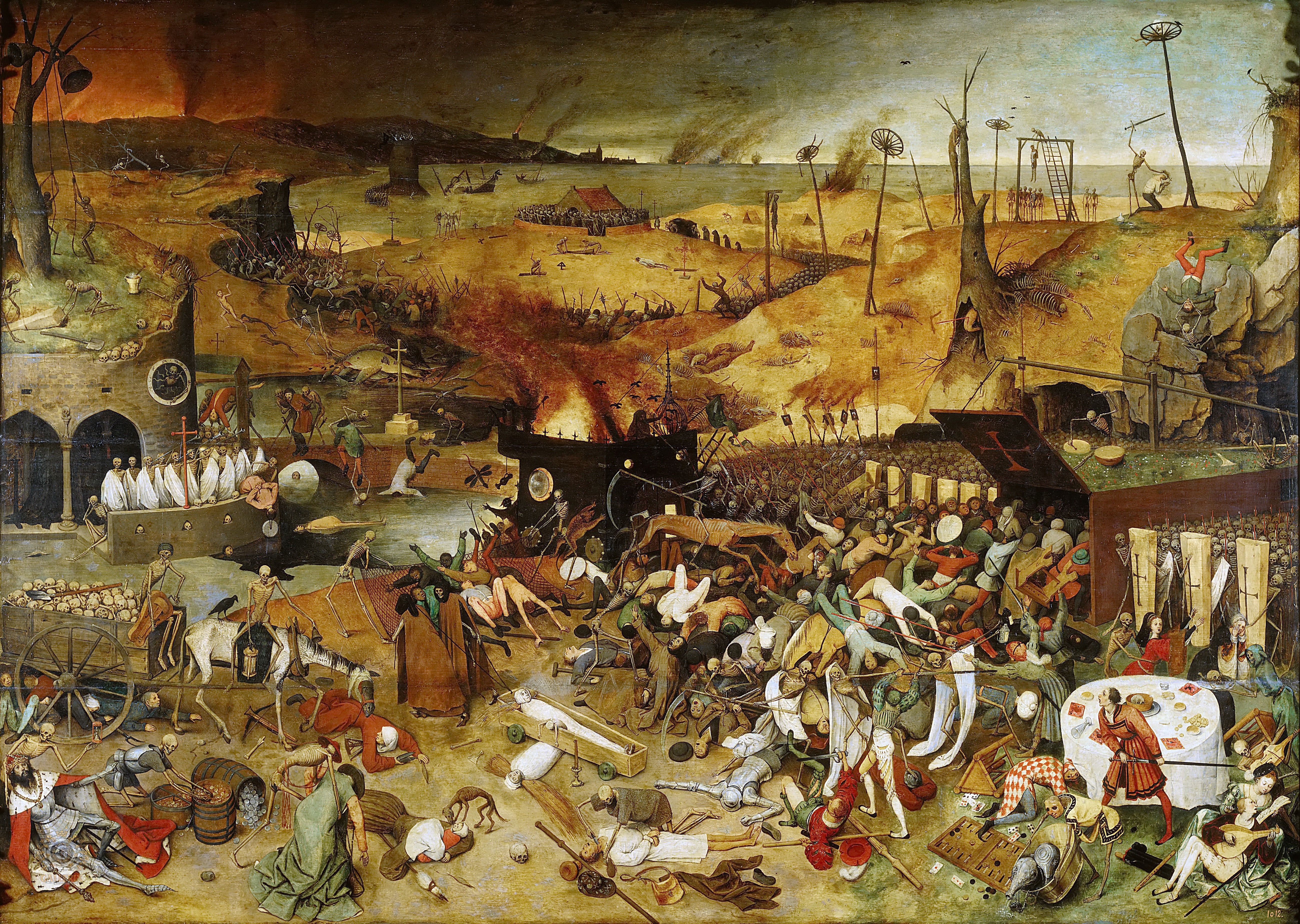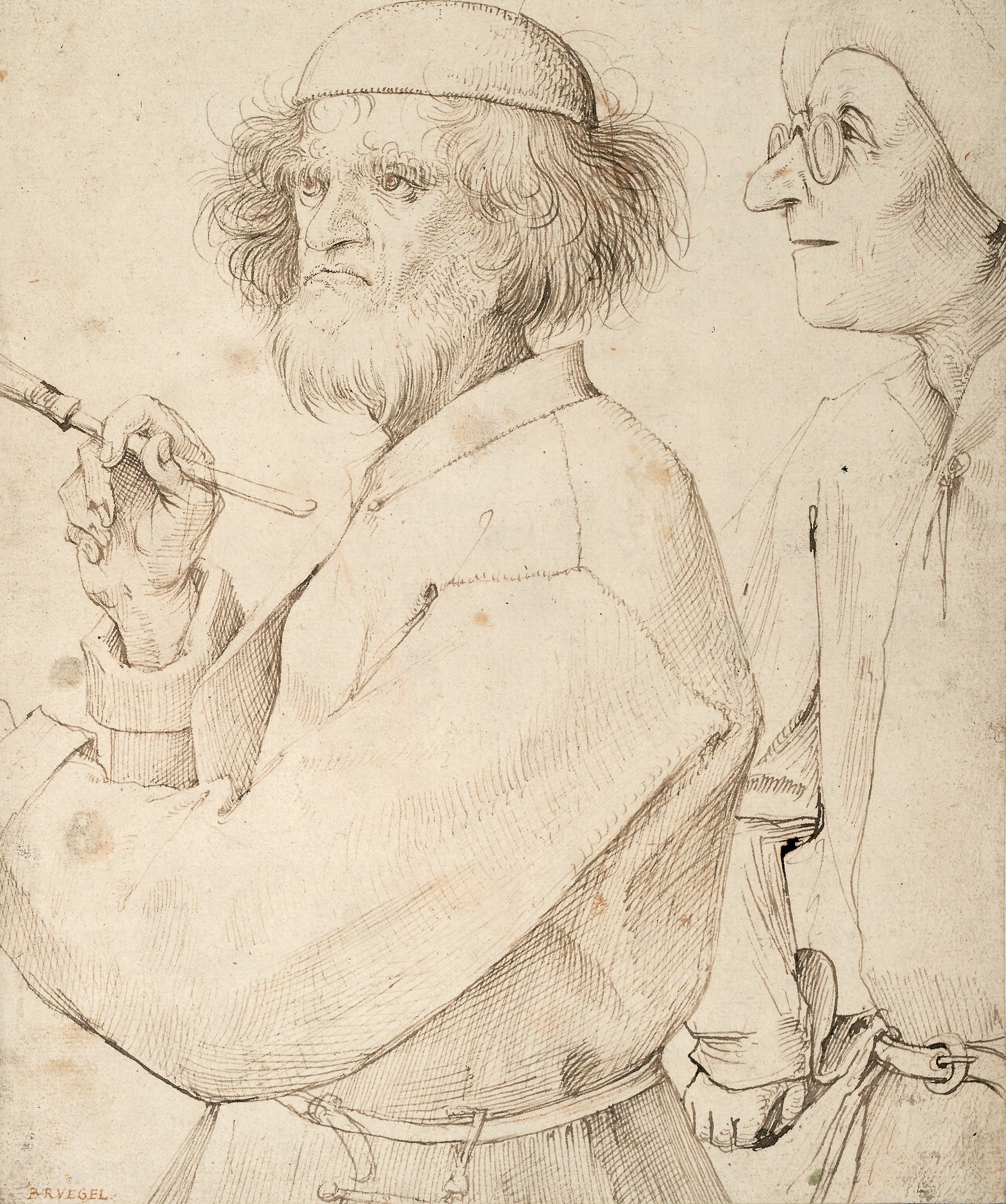"The Triumph of Death" by Pieter Bruegel the Elder is not for the squeamish. It ranks among the most terrifying paintings of the age and the centuries since have only boosted its fearful currency. Not until Goya's 1810-20 Disasters of War was there anything in European art quite like this savage depiction of hell on Earth. Bruegel's single-panel masterpiece has a grim message: there is no escape from the scourge of war. The men and women in the fire-strewn landscape try to fend off death's henchmen with sword and spear, but the living are badly outnumbered and their efforts futile. Not only is death inevitable and unsparing of society high and low, (a lesson Medieval and Renaissance artists never tired of teaching their audiences), but death is perversely creative as well. The variety of tortures in store for humans during wartime is endless. The hallucination is as intense and action-packed as Bosch's, but the cold-bloodedness of the violence leaves no room for whimsy.
It's hard to tell whether the scenes in Triumph of Death are purely imagined, conventions based on earlier artists' infernal visions, eyewitness observations of war atrocities, or a combination of the three. Every inch of The Triumph of Death features chaos on a massive scale. Skeletons are murdering hundreds of people, everyone from peasants to nobles, and from children to the King. None are spared their fate at the hands of death. This painting illustrates the influence of the Dutch master painter Hieronymous Bosch, who also painted demonic illustrations of death and the supernatural, on Brueghel’s work. Tap on the image to see it in full screen and pinch to zoom it - it is really worth it!


 Pieter Bruegel the Elder
Pieter Bruegel the Elder